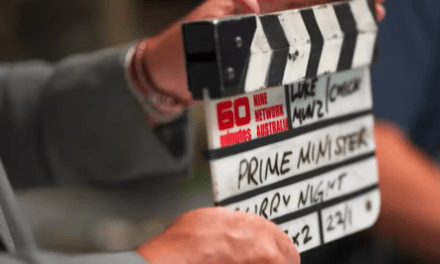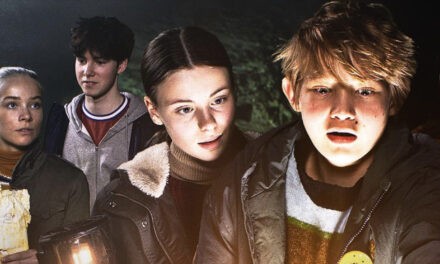
At a Royal Television Society event in February, Peter Bazalgette (formerly Creative Director of Endemol, latterly Chair of English National Opera and about to take up a new role as Chair of Arts Council England) interviewed Maria Miller MP (Secretary of State forCulture Media and Sport) about television. Miller presented a resolutely dead bat, much to the frustration of some journalists present who wanted to quiz her about the government’s response to Leveson’s proposal. She said kind words about the BBC but stressed the value of competition; thought television was surviving the digital change very well but indicated that she knew how much change was still to come; suggested that the introduction of local television (her predecessor’s toy) would fulfill a real need and would of course provide real competition. She and Bazalgette twinkled charmingly at each other and she managed to bring questions about television from the audience to the same levels of blandness. But her comments that ‘television is good for growth’ and ‘shows off the best of Britain’ didn’t suggest much commitment to psb concepts.
One moment of liveliness occurred, however, when Bazalgette asked her about her own television viewing. This is the kind of thing which has caught Ministers out in the past so Miller had her answer prepared and Borgen and Homeland featured along with Downton Abbey. She also stressed family viewing with her sons whose favourite programme is apparently Top Gear. Bazalgette picked up on this and, moving away from Miller’s preferences, honed in on the children’s viewing. Of course, he announced, they would be viewing with a second screen and, without waiting for confirmation, turned knowingly to the audience as if we all knew how important this was.
This little exchange brought in two motifs which have become familiar when male television writers, producers and executives talk about the future of television. Firstly, the future of television viewing can be found in the habits of 13 year-old boys. I can’t count the number of times I have heard this at conferences from speakers representing the BBC, ITV and independents. The speaker refers to his young son, who of course handles the technology better than the expert speaker can, and uses him as a pattern for the shape of things to come. It is always a boy, he’s always in his early teens (presumably before the surly 16 year old stops having his viewing habits picked over by Dad) and it is always assumed that his viewing behavior will remain fixed at this point in his life. As a woman in a rather different and more populous demographic this kind of casual referencing infuriates me but I have learnt that it is useless to argue against it. The future of television is apparently to be determined by this pre-Oedipal fantasy of father-son partnership.
The second motif is newer and relates to the use of the second screen on phone or tablet. It would seem that for these same television practitioners the ideal viewer is now watching television while communicating views and comments via the second screen. This is necessary so that those who’ve worked on the programmes being watched can see, on their third screen, how it has been received. Twitter is of course the most useful medium for this (imagine the excitement of watching your programme trending on twitter and perhaps also being the subject of Stephen Fry’s wit) but other forms of social media are acceptable. This perhaps is a consequence of television’s history of being watched distractedly but I doubt there is another form (theatre, cinema, music, poetry) where the makers so readily welcome the evidence of distracted attention. I am not sure they are wise to do so but then I’m still happy to do the ironing while I watch – which I guess would not appeal to 13 year old boys.

Prompted by this, though, I did decide to look at two forums hosted by The Guardian for discussion of two recent series I’d been following – Borgen and Dancing on the Edge. They were not write-as-you-watch sites but did invite pretty instant responses after viewing broadcast episodes. Both were hosted by a journalist (Vicky Frost and Jon Wilde respectively) and both invited readers to comment on an episode by episode basis. The Borgen forum had clearly been established for first series and there was a chatty sense of getting back together. Frost was a fan of Borgen and while she made some criticisms, particularly of the out of Denmark episodes, she and the contributors were generally warm in their praise. There was also a good deal of semi-joking comment about scarves, furniture, house layout and actors spotted from other Danish series.
The Dancing on the Edge forum was different in tone. This was a one off series so there was no sense of a community being reassembled with a pleasant sense of purpose. The series was created by a well-known television practitioner but from Wilde’s first introduction it was clear that Poliakoff was not going to get a clear run: ‘Poliakoff doesn’t do fast-paced’ we were told, the £8.3 million budget was signalled as requiring justification ( it ‘buys a strikingly authentic wardrobe and lots of languorous shots in grand locations’) and, in an interesting discussion about the authenticity of the music, Wilde expressed scepticism as to whether the two female actors playing the singers had ‘any genuine feel for jazz’. As the series wound through its five episodes, Wilde’s commentary became more negative, too much so for some contributors who complained that he was abusing his role. What was interesting though was the battle which took place between the detractors who were initially dominant (criticizing the acting, script, music, setting, plot in a manner which brooked little debate) and the supporters who through sheer doggedness seemed gradually to take over. Comments which had initially seemed to be heading for Pseuds Corner began to provoke debate rather than abuse as one critic commented at the beginning of a very long post on episode 5:
no sense of a community being reassembled with a pleasant sense of purpose. The series was created by a well-known television practitioner but from Wilde’s first introduction it was clear that Poliakoff was not going to get a clear run: ‘Poliakoff doesn’t do fast-paced’ we were told, the £8.3 million budget was signalled as requiring justification ( it ‘buys a strikingly authentic wardrobe and lots of languorous shots in grand locations’) and, in an interesting discussion about the authenticity of the music, Wilde expressed scepticism as to whether the two female actors playing the singers had ‘any genuine feel for jazz’. As the series wound through its five episodes, Wilde’s commentary became more negative, too much so for some contributors who complained that he was abusing his role. What was interesting though was the battle which took place between the detractors who were initially dominant (criticizing the acting, script, music, setting, plot in a manner which brooked little debate) and the supporters who through sheer doggedness seemed gradually to take over. Comments which had initially seemed to be heading for Pseuds Corner began to provoke debate rather than abuse as one critic commented at the beginning of a very long post on episode 5:
‘Reading the more recent posts in favour of DOTE, something has just been madeclear to me and I suppose I should apologise for being so slow. When such detailedanalysis first appeared in response to earlier episodes, I thought people were justbeing pretentious or silly or sycophantic; and some of the time, I just reacted withscorn. However, I now think we are divided by something deeper, a fundamental question of aesthetics – let’s call it “the intentionalist stance”. . . .’
I still think that the format makes it difficult to present (or read for) a coherent argument but there was no doubt that this disagreement generated insight into particular scenes. So if you find your students are answering questions on Poliakoff by discussing the symbolism of the moment when Lady Cremore ate an artichoke in front of Jessie and Carla, then check out their (and your) interpretations on the third screen.
Christine Geraghty is an Honorary Professorial Fellow at the University of Glasgow and an Honorary Research Fellow at Goldsmiths, University of London. Her publications on television include a contribution to the 1981 BFI monograph on Coronation Street; Women and Soap Opera (Polity, 1991); and My Beautiful Laundrette (I B Taurus, 2004). Her BFI TV Classic on Bleak House (2005) will be published in October 2012. Her BFI TV Classic on Bleak House (2005) was published in October 2012. She is on the editorial board of the Journal of British Cinema and Television and sits on the advisory boards of a number of journals, including Screen.





